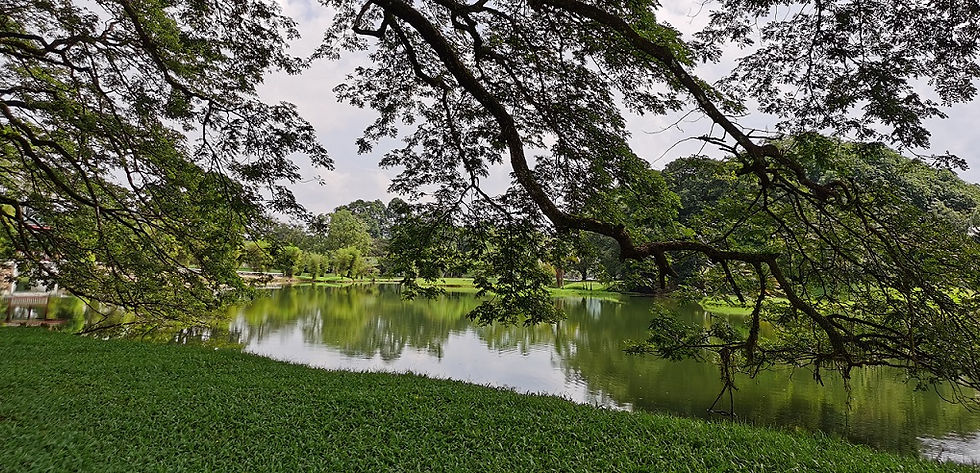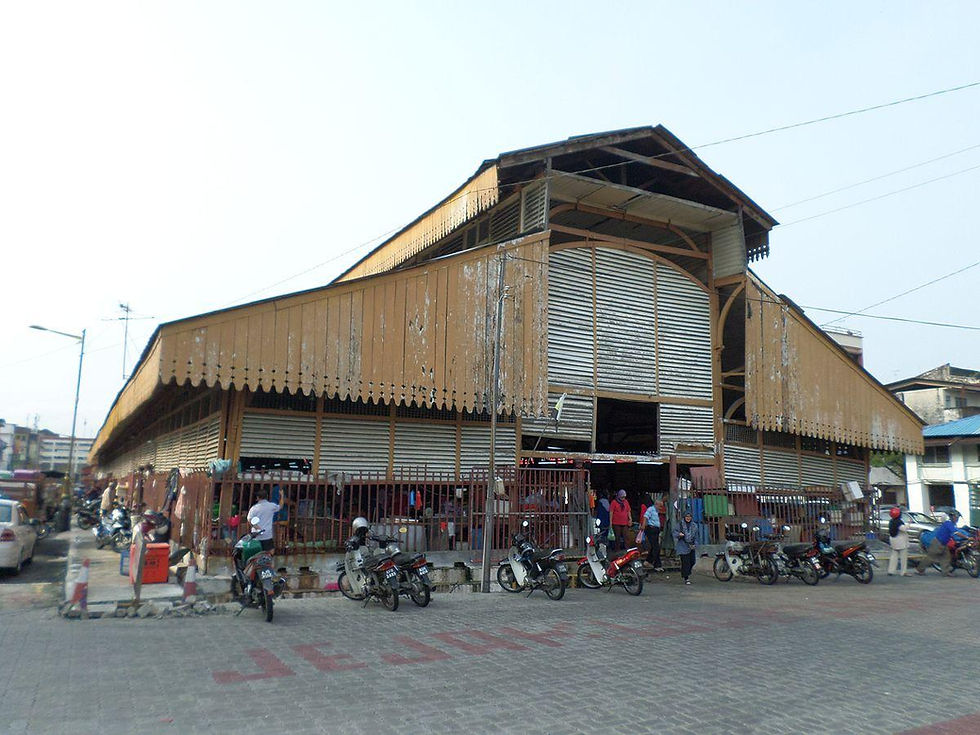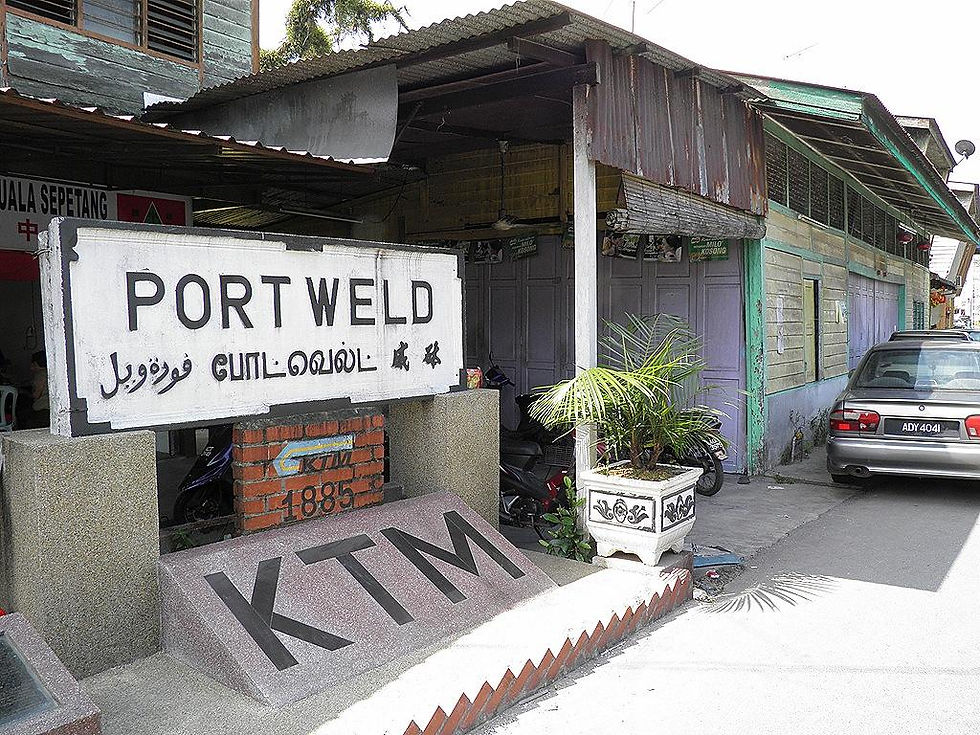Fabulous Firsts of Taiping
- Lina Kool

- Jul 29, 2020
- 7 min read
Updated: Jul 30, 2020
The Heritage city of Taiping, or fondly christened “Raintown” (雨城) by the locals, is the wettest town in the country, as the name suggests. So much so, there are folks in town betting their good money on the exact time of the first drop of rain during the rainy season!
Established in 1874 to mark peace between warring mining groups after the Larut War ended, the name Taiping means “everlasting peace” in the Hokkien dialect.

Taiping was also the capital of the Federation of Malay States of Perak, Selangor, Negeri Sembilan and Pahang, before Kuala Lumpur took the honour.
Boasting of rich history and culture since before the turn of the century, Taiping also proudly hosts many of the firsts in Malaysia.
Larut Municipal Council (1874) Started and formed as a Sanitary Board by the British, it is the local authority responsible for managing the Taiping area based on local interest and town planning.
Assistant Resident Residency PWD 1 (1875)
Now known as PWD 2, this bungalow was originally occupied by Captain Speedy and located on a hill-lock overlooking Taiping town.
Matang Headman's Hall - Balai Penghulu (1875)
Once served as a notable administrative office and court of the Penghulu, now having undergone various additions and alterations.
Roman Catholic Church @ St. Louis Church (1875)
Located next door to the Taiping Convent Girls' School, it was founded a year after the British intervention through the French Fathers who brought the faith from Penang. With the continual growth of the Catholic population, a second parish was set up to address the needs of the Tamil-speaking assembly. This was the start of St. Louis Church, completed in 1899. The first building is now used as the Parish Hall and the present church was built in 1937.

The Esplanade (1875)
Earlier called the "padang" or "plain", the Esplanade was first established together with Taiping town, and later rebuilt in 1881 after the great fire of 1880.
Post & Telegraph Office (1877)
The telegraph system was started in the country (then called Malaya) and was in use since the 19th century until 1 July 2012. Now the Telegraph Museum, this heritage building belongs to Telekom Malaysia Berhad (TM).
Gaol (1879)
Two years later it was relocated to the present site, now better known as Taiping Prison. It was rebuilt in stages between 1884-1997.

British Officers' Mess (1879) A stately whitewashed mansion overlooking the Esplanade, it is still used by the Malaysian Army today.
Maxwell Hill Resort (1879)
Established under the Pangkor Treaty of 1874 between the Sultan of Perak and the British Empire, Maxwell Hill is home to more than 600 species of plants and is considered the wettest area in Peninsula Malaysia. Access is restricted to only 4-wheel vehicles due to the narrow and steep roads. Several colonial-era bungalows and rest houses dotted the hill resort, available for rent to tourists who come all year round. It was renamed Bukit Larut in 1979.

Town Rest House (1879)
Initially a simple timber structure accommodation for Perak Government staff and visitors, it was rebuilt in 1894 and the words "Rest House" were embossed at the facade. Thereafter, it was recognised as the Town Rest House.
Barrack (1879)
The first Cantonment built for the para-military in the Malay States. Initially a single barrack in 1873 under Captain Speedy in Larut. Two more barracks were erected at the same site and completed in timber framework with brick pillars in 1879, followed by further extension in 1904.
Public Office @ Land & District Office (1881)
The first public office built on raised pillars and planks with further additions made in 1885. In the 1890s it was used to accommodate various Government departments, and was demolished in 1985. A new public office commenced in 1895 and was completed in 1897, now known as Pejabat Daerah & Tanah Larut Matang Selama.
Clock Tower @ Town Police Station (1881)
Dubbed the "old Clock Tower", first built as the town Police Station in a single-storey timber structure which also doubled as the original Fire Station. Later rebuilt largely of brick, known as the "Fort" in those days, it now doubles as a Tourist Information Centre.

General Hospital (1881)
The first Government hospital in the Malay States was started in 1878 for prisoners, then renovated and opened for the public in 1881, originally called Yong Wah Hospital. In 1897 the first X-Ray apparatus was installed, reportedly the first of its kind in the Far East. In 2007, the hospital was separated into two sections - the outpatient unit was shifted to a new building on Tupai Road, while the old building serves as the emergency unit.

Anglican Church (1883)
The oldest and most venerated Anglican Church in the peninsula, the All Saints' Church features a timber facade and Gothic architectural design, with a small adjacent cemetery. Arguably, the most striking feature of the church is the stained glass window installed in 1911, which survived World War II intact. It still uses the pipe organ, but only on special occasions due to the expensive servicing cost.

King Edward VII School (1883)
The premier secondary school for boys (and girls, in Sixth Form), formerly known as Central School Educational Centre. During World War II, it was occupied by the Japanese army and the sports field became a farm.
Taiping Town Market (1884)
The Taiping Market consists of 2 buildings, the Old Market built in 1884 and the New Market built in 1885, each one a timber post and truss structure. There was an iron fountain that stood in front of the market, but removed many years later and replaced with a simple concrete clock tower.

Lake Gardens (1884)
The Lake and Gardens which served as an ornamental park was developed in stages. It was a combined effort beginning with Sir Hugh Low, W.R. Scott, Frank Swettenham, A.R. Venning and many others.
Railway (1885)
Manually constructed between Port Weld and Taiping, at 8 1/4 miles long (approx. 13 km) and used to transport tin and other bulk commodities to the coastal port.
Perak Railway Building (1885)
A combination of old and new Railway buildings PWD 267 & PWD 269 (built in 1885 & 1893 respectively). This station was in operation until it was replaced by a new station that was built as part of the Ipoh-Padang Besar Electrification and Double-Tracking Project. The old station is still standing and is being preserved.

Port Weld (1885)
Situated on the coast of Perak at the mouth of Sungai Sepetang, it was also known as the "railway sea port" for Taiping, Kamunting and Larut - the leading mining district of Malaya. Its construction was associated with the building of the first railway in Malaya.

Perak Museum (1886)
Called a "piece of art" constructed in Victorian style in 1883 and a particularly elegant example of early British Colonial architecture. Also known as PWD 268, it was only completed in 1886 due to lack of funds. As the collection of exhibits grew, a new two-storey building was added between 1900 to 1903.

Golf Course (1886)
The first golf course in the Malay States was subsequently relinquished to Bukit Jana Golf Club in 1988 and in 1994, the New Club took over the affairs of the Golf Club.
Kwang Tung Association (1887)
The first club/association for the Chinese was founded by Kapitan China Chung Keng Kwee and is located at the junction of Temple Street and Kota Road.
Chartered Bank (1888)
The Chartered Bank of India, Australia and China was established on 15th November 1888. PWD 264 was located at the junction of Kota Road and Esplanade Road. Today it houses the Taiping Public Library.
Government Girls' School - SMK Treacher Methodist (1889)
The first English Girls' School in the Federated Malay States, it was then known as the English Government Girls' School. The establishment was much devoted to Lady Treacher, who was the wife of the then British Resident of Perak - Sir William Hood Treacher. It went through a major renovation in 1901 to expand its building. In 1902 the school changed its name to Lady Treachers Girls' School to honour its pioneer, and later renamed to Treacher Methodist Girls' School.
Topo & Survey Office (1891)
Occupying PWD 105 at Station Road under the leadership of Chief Surveyor Mr. G. Lefroy. It was previously under the Department of Public Works (1877 - 1888).
Ceylon Association (1899)
The first association for the Ceylonese community founded in the Malay States. Also known as the "Little Jaffna", it was a centre for social, religious, intellectual and sports activities.
Matang Mangrove Forest (1902)
The 40,000 hectare Matang Mangrove Forest was gazetted as a Permanent Forest Reserve in 1906. Today, it is recognized as the best managed sustainable mangrove ecosystem in the world.
Indian Association of the F.M.S. (1906)
Later rebuilt new in 1925, it was formed for the purpose of promoting the intellectual, social and moral welfare of the Indian community.
Aerodrome @ Tekkah Airstrip (1929)
The historic Taiping Aerodrome where aviation legend Amelia Mary Earhart had a refuelling stopover in 1937 during her journey to circumnavigate the globe, it has become the state's heritage site. The 16.1 hectare airstrip is reputedly the first airport in South East Asia.
Silver Jubilee Jetty (1936)
The jetty with colonial design was constructed to commemorate the silver jubilee celebration of the reign of King George V of England.
Commonwealth War Memorial (1947)
The Taiping War Cemetery is the final resting place for Allied personnel who were killed during World War II, particularly the Malayan Campaign and the Japanese occupation of Malaya. Located near the foot of Maxwell Hill (Bukit Larut), it was erected and maintained by the Commonwealth War Graves Commission. It is divided into two sections with Christian graves located on the southeastern side of the road while non-Christian graves lay on the opposite side.

Taiping Zoo & Night Safari (2003)
Located in the natural setting of the Taiping Lake Gardens, the Taiping Zoo is the only zoo in North Peninsular Malaysia. Covering 34 acres, it is currently home to more than 180 species of animals. the Taiping Night Safari is a first of its kind in Malaysia. Bathed in lighting similar to moonlight, the beauty and splendour of nature is enhanced while nocturnal animals are displayed in their natural environment.
There is so much more to discover in the Heritage City of Taiping. One visit is never enough and it will leave you wanting to come back for more!





Taiping folks are simple ,but not stupid!Amelia Earhart was later retracted from Tekkah Airstrip 'story',as 'no such thing' happened!First railway station/building was at a school. It wasn't at the present location.Some of these 'repeated postings' were found to be 'copied' from wrongly informed sources.1899- St. Louis wasn't the 1st Catholic Church,not even in Taiping not to mention in the country.Tai-ping's 2 syllable meant Peaceful in Cantonese, not in Hokkien. Matang mangrove was never a gazette in 1906,as at that year, the colonists were still busily stealing our tin & rubber .And the 1st railway rushes through these mangrove ,which were planted to make fuel, to the Matang port to be shipped back home to England!